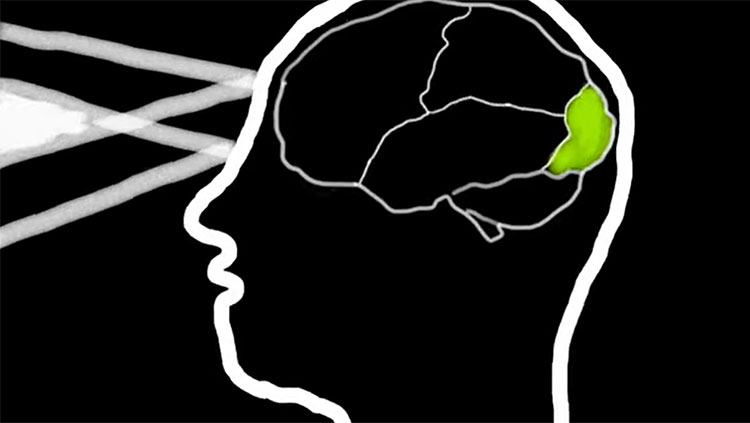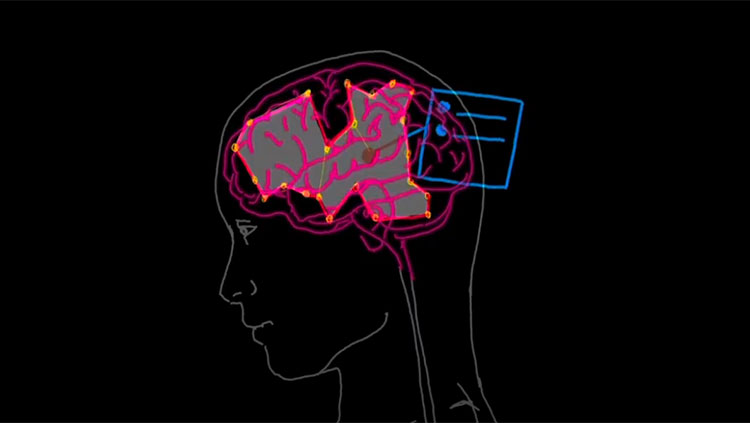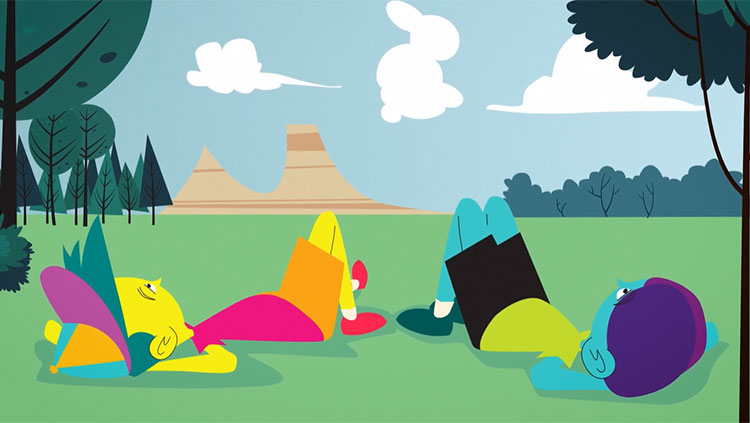Motivation to Act: Arousal
- Reviewed29 Aug 2022
- Author Melissa Galinato
- Source BrainFacts/SfN

Think about what happens in your body and mind when you speak in front of a crowd — your brain state is very different from when you are asleep. Perhaps you notice changes in your breathing, heart rate, or stomach. Maybe your thoughts are racing or panicked. Or maybe you are energized and excited to perform for your audience. These are examples of the complex brain state called arousal.
Rather than merely being awake, arousal involves changes in the body and brain that provide motivations to do an action — teaching a class, speaking in public, or focusing your attention. People experience arousal daily when searching for food while hungry, or when talking with other people (social interaction). Arousal is also important for reproduction and for avoiding danger.
The level of arousal varies across a spectrum from low to high. When arousal falls below a certain threshold we can transition from wake to sleep, for example. But under heightened arousal, like intense anxiety, we cannot reach this threshold and we stay awake.
Neurotransmitters
During arousal, the brain must devote resources to specific brain regions, much as an emergency call center redirects resources like ambulances and fire trucks during a fire. Specific types of neurons in the brain regions involved in arousal release multiple neurotransmitters, telling the rest of the brain and the body to be on alert. These neurotransmitters are dopamine (for movement), norepinephrine (for alertness), serotonin (for emotion), and acetylcholine and histamine, which help the brain communicate with the body to increase arousal.
Sensory Input
While neurotransmitters provide the internal signals for arousal, external signals from the outside world — like the bright lights (visual input) and cheering crowds (auditory input) at a stage performance — can also stimulate arousal. Sensory input gets sorted in the brain region called the thalamus. Often called a “sensory clearing house,” the thalamus regulates arousal, receiving and processing sensory inputs from brain regions important in senses like vision and hearing and relaying these inputs to the cortex.
Autonomic Nervous System
Once the brain is aroused, what does the body do? The reticular activating system, in the brainstem, coordinates signals coming from sensory inputs and neurotransmitters to make sense of events in the brain and pass that information to the rest of the body. The reticular activating system specifically controls the autonomic nervous system, which affects heart rate, blood flow, and breathing. By controlling these automatic body processes, the reticular activating system sets up the physical state of arousal, bringing important resources like oxygen and nutrients to parts of the body where they are needed.
Together, the changes that happen in the brain and body during arousal enable us to be alert and focused, which helps us process information quickly. Using this information, we can choose the appropriate emotional response or physical action for a given situation.
Sexual Arousal
Several complex brain systems and endocrine (hormone) systems contribute to sexual arousal and behaviors, but the brain regions, neurotransmitters, and body systems are similar to those involved in general arousal. The distinguishing factor is that sexual arousal also involves hormones such as estrogen and testosterone, which then activate neurons that release the same neurotransmitters that are released during general arousal. Many human and animal studies report interactions between sex hormones and neurotransmitters dopamine, serotonin, gamma-aminobutyric acid (GABA), and glutamate. Researchers have also found that brain regions such as the hypothalamus, amygdala, and hippocampus contain many estrogen and progesterone receptors, and brain regions that mediate feelings of reward (nucleus accumbens) and emotions like pleasure (amygdala) motivate sexual behaviors. Overall, the primary involvement of sex hormones is a key in defining the brain state of sexual arousal.
Adapted from the 8th edition of Brain Facts by Melissa Galinato.
CONTENT PROVIDED BY
BrainFacts/SfN
References
Cahill, L. (2006). Why sex matters for neuroscience. Nature Reviews Neuroscience, 7(6), 477-484. https://www.nature.com/nrn/journal/v7/n6/full/nrn1909.html
Pfaff, Donald (2006). Brain arousal and information theory neural and genetic mechanisms. Cambridge, Mass.: Harvard University Press.
Pfaff, Donald W., and Helen E. Fisher. "Generalized brain arousal mechanisms and other biological, environmental, and psychological mechanisms that contribute to libido." From the couch to the lab: Trends in psychodynamic neuroscience. (2012): 64-84.
What to Read Next
Also In Thinking & Awareness
Trending
Popular articles on BrainFacts.org



















